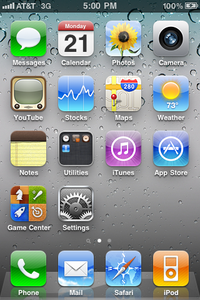Throughout 2010 there were escalating tensions between Google Android and Apple iOS, as the two platforms emerged as the rising superpowers in the mobile world. But, if you thought things were heated between them last year, then as the saying goes, you ain’t seen nothing yet. These two ecosystems are on course for a massive collision in 2011 and the stakes are about to get a lot higher.
The arrival of the iPhone on Verizon is a major incursion into what had previously become Android territory. Android 3.0 “Honeycomb” (the tablet OS) is about to unleash an army of Android tablets in a full frontal assault on the iPad. There is going to be blood, but as my colleague Larry Dignan notes, the carnage is likely going to have a greater impact on the other competitors in the mobile market more than on Apple and Google themselves.
What about Microsoft, HP, BlackBerry, and Nokia?
Unfortunately, it looks like all four of these behemoths are on the wrong side of history. These guys are all going to be reduced to challenger status in 2011. They’ll be on the outside looking in. Both Microsoft (with Windows Phone 7) and HP (with Palm webOS) could have snatched some of the momentum away from Apple and Google a year ago in the smartphone market, but they’re a little late now. Even though both have solid products, their timing is off and they have a lot of ground to make up in winning over software developers to their platforms.As for BlackBerry and Nokia, they both have a large installed base of customers to draw on and build from, but it’s not going to be enough to stem their losses in 2011. They are both too far behind when it comes to product innovation. Oh sure, they will continue to hold on to nice chunks of old market share in some places, but both will likely continue their decline at accelerating rates in 2011.

